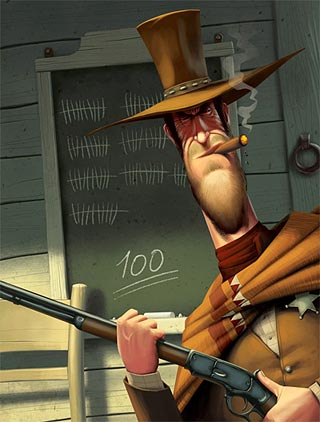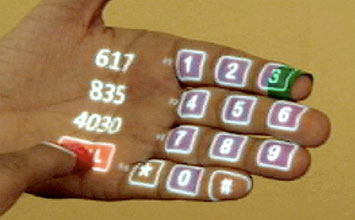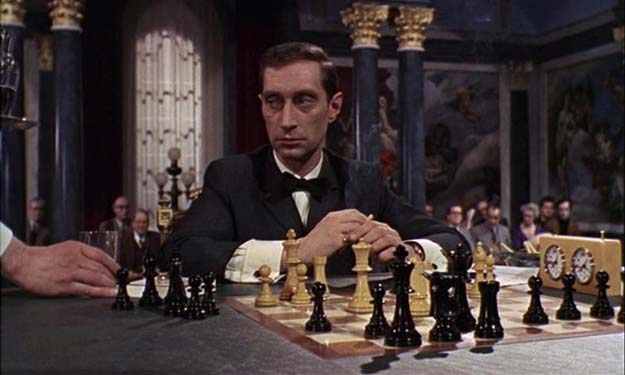leisure

{ The BarRectum was an actual bar built inside a giant anatomical model representing the human digestive system, from tongue to anus | via Boing Boing | Thanks PP }
gross, leisure | April 22nd, 2010 7:22 am
books, drugs, experience, leisure | April 22nd, 2010 7:00 am
archives, leisure | April 20th, 2010 8:40 pm

Tom Bissell was an acclaimed, prize-winning young writer. Then he started playing the video game Grand Theft Auto. For three years he has been cocaine addicted, sleep deprived and barely able to write a word. Any regrets? Absolutely none.
{ Tom Bissell | full story }
installation { Stephen Johnson, Ice Cream Floats, 2005-2007 }
drugs, experience, leisure | March 23rd, 2010 2:10 pm
haha, leisure, weirdos | March 23rd, 2010 12:40 pm

Would you be happier if you spent more time discussing the state of the world and the meaning of life — and less time talking about the weather?
It may sound counterintuitive, but people who spend more of their day having deep discussions and less time engaging in small talk seem to be happier, said Matthias Mehl, a psychologist at the University of Arizona who published a study on the subject.
“We found this so interesting, because it could have gone the other way — it could have been, ‘Don’t worry, be happy’ — as long as you surf on the shallow level of life you’re happy, and if you go into the existential depths you’ll be unhappy,” Dr. Mehl said.
{ NY Times | Continue reading }
photo { Laura Taylor }
ideas, leisure, psychology | March 20th, 2010 9:00 am
psychology, sport | March 11th, 2010 4:46 pm

How to rate the sportsmen and women of the day against the stars of yesteryear.
There’s no easy way to make meaningful comparisons when sports change so dramatically over the years. Even in endeavours like baseball where player stats have been meticulously kept for almost a hundred years, comparisons across the decades can be odious. Is it really fair to compare players from the 1920s against those of the last 20 years when so many external factors have changed such as the use of new equipment, better training methods and, of course, performance enhancing drugs?
In 1914, the National League Most Valuable Player was Johnny Evers with a batting average of 0.279, 1 Home Run and 40 Runs Batted In. That was impressive then but these stats would embarrass even a second rate player in today’s game.
But what if there were a way to remove the systematic differences to reveal intrinsic talent? Today, Alexander Petersen at Boston University and a few pals explain just such a method that “detrends” the data leaving an objective measure of a player’s raw ability.
{ The Physics arXiv Blog | Continue reading }
flashback, science, sport | March 11th, 2010 4:42 pm
fire, toys, visual design | March 11th, 2010 4:40 pm

Shoe tossing, the act of using shoes as improvised projectiles or weapons, is a constituent of a number of folk sports and practices. Today, it is commonly the act of throwing a pair of shoes onto telephone wires, powerlines, or other raised wires.
{ Wikipedia | Continue reading }
photos { Wooster Collective | via copyranter }
leisure, visual design | March 4th, 2010 6:05 pm

How far can bullets travel when fired into water?
The first candidate for this test was the Civil War rifle. At a range of 15 feet, the ballistics gel was completely unharmed; likewise at five feet. Only when the range was reduced to three feet did the bullet finally penetrate the gel, suggesting that diving under water was probably a pretty effective way of dodging slugs during the Civil War.
The experimenters moved on to the hunting rifle, which was loaded with a full-metal jacket .223 round that emerged at roughly 2,500 feet per second. At ten feet, the bullet disintegrated and the gel was untouched. At three feet, the bullet again broke up, with its tip coming to rest on the gel — not nearly enough power to damage flesh.
A bullet from the M1 Garand, with a muzzle speed of 2,800 ft/sec, also disintegrated at the ten-foot range. At two feet, the slug penetrated about four inches into the gel, suggesting a non-fatal wound. The armor-piercing .50 caliber round didn’t do any better — it, too, came apart at distances greater than five feet and lost most of its punch by three feet.
The engineers at the Central Scientific Research Institute for Precision Machinery Construction in Moscow correctly perceived the problem with shooting into water and in response developed the SPP-1 (Spetsialnyj Podvodnyj Pistolet, or “Special Underwater Pistol”) for use by Russian Navy frogmen. The SPP-1 is a manually operated four-barrel handgun that breaks open along the top and loads in a fashion similar to a double-barrel or over-and-under shotgun. The ammunition is designed to work underwater, using long bottlenecked rimmed casings plus bullets made from mild rather than hardened steel and designed to be stable underwater. The barrel isn’t rifled. According to the specs for the pistol, when fired at a depth of five meters — over sixteen feet — it’s lethal up to seventeen meters, or over fifty-five feet.
The SPP-1 isn’t the only exemplar of the breed. Other firearms are designed to work underwater as well, but they tend more towards the spear-gun model using dart-like projectiles. There’s no bright-line boundary where a bullet becomes a dart, but the projectiles fired by the Heckler & Koch P11 Underwater Pistol, for example, clearly cross the line. The H&K is an all-polymer weapon made especially for underwater use by the German Bundeswehr Kampfschwimmer — “army combat divers.” Each of the five dart-shaped projectiles is powered by a small, solid-fuel rocket. The weapon has been featured in some high-profile films, including Tomb Raider with Angelina Jolie, and is said to be able to inflict a fatal wound at fifty feet underwater.
{ The Straight Dope | NB: The article isn’t on the site anymore | Related: Can a bullet fired into the air kill someone when it comes down? }
photos/enlarge { 1. Howard Schatz | 2. Unsourced }
guns, photogs, sport, visual design | February 18th, 2010 5:00 pm

Are pillow fights more dangerous than roller coasters?
A paper compared head motions that occurred in 4 participants when they rode 3 different roller coasters, drove bumper cars, and had a pillow fight. What are the implications for brain injury? they asked. (…) “The highest level of rotational acceleration was measured during the pillow fight. Interestingly, the pillow fight generated peak head accelerations and velocities greater than the 3 roller coaster rides.”
{ Neurocritic | Continue reading }
brain, health, leisure, science | January 14th, 2010 6:10 pm
leisure, visual design | December 16th, 2009 12:43 pm

It’s five years today since the world’s most famous computer game, World of Warcraft, began. And I’m both proud and slightly embarrassed to say that I’ve been there since the beginning. (…)
I believe that World of Warcraft matters. Exactly how and why it matters, though, can be hard to get at from the outside; much of what reaches the mainstream media is a muddle of scandals, statistics and pseudo-scientific scraps. So I’d like to take a few moments to recall just what it was like to play this game for the first time five years ago, in the company of an old friend who had managed to wheedle both of our ways onto the game’s American servers in time for launch—and why, five years on, the character I created then is still soldiering on through the northern reaches of the world’s most famous unreal destination.
What struck us, first of all, was just how much it felt like a world: huge, organic, inviting exploration. There were lakes, mountains, rivers, forests, cliffs, towns, cities, and lots of things to squash, splatter, maim and generally exterminate for the sake of various rewards. What struck us shortly after this was that, although there was a game here to be played, there was also an awful lot more to it than simply playing and trying to win. My friend had chosen to play a dwarf warrior as his first character but, unlike any other game we’d encountered before, there was no sense in which he was that character. As far as World of Warcraft was concerned, he was himself, and just happened to be strolling around a vast cartoon world in the guise of an aggressive dwarf. And that was much more interesting, because it meant that—for the first time any of us had known—you could actually be yourself while playing. In fact, you could be all sorts of things that your self didn’t normally manage.
{ Prospect | Continue reading }
image { Denis Zilber }
experience, leisure, technology | December 16th, 2009 12:42 pm

“This wizard has a crystal ball which unerringly reads people’s minds,” I said. “All it needs is a psychic whiff of you over the phone.”
“That’s impossible,” he said, “Show me.”
“No problem,” I said, “we can call him right now. Think of a three-digit number.”
“758,” Skep said.
I called the Wizard right away. Here’s what I said over the phone:
“Hello? Is this the Wizard?”
“Well, could I speak to him please?”
“O.K.”
“Hello, Wizard? I have someone here who wants you to guess his number.”
I handed the phone to Skep.
Skep: “Yes, you’re right. The number is 758.”
Skep’s eyebrow was twitching vigorously. “You’re obviously communicating the information in some way,” he said, “though I can’t figure out how.”
Answer.
{ NY Times | Continue reading }
ideas, leisure, mystery and paranormal | December 10th, 2009 7:21 pm

A Hindu spirit is stalking the streets of Stockholm, armed with this Nordic capital’s latest fad: the nail bed.
It is not the wood and iron nail variety used by Hindu fakirs, but instead a modern Swedish variation that usually consists of a light foam rubber pad, covered in cotton sacking and embedded with small, hard plastic disks with sharp little spikes. Modernized or not, it hurts. And the fewer the spikes, the more they hurt.
“It’s quite painful initially,” said Catarina Rolfsdotter-Jansson, 46, a yoga instructor and writer who uses her nail bed almost every day. “The trick is, all the adrenaline rushes, after which you relax and feel nice again.”
{ NY Times | Continue reading }
leisure, pipeline, weirdos | November 25th, 2009 5:53 pm

…while politicians occasionally use poker terms when discussing strategy, more of them–and more journalists—put on their game faces with terms from chess.
You would think that people would use that terminology the way chess players use it. Most of the time, however, they’re using the terms colloquially, even though they are using them in a strategic context. While that usage isn’t wrong, it’s not as precise as it could (or should) be. (…)
In chess, a “gambit” is an opening move, one that almost always sacrifices a piece, usually a “pawn.” But its more common use, one sanctioned by most dictionaries, refers to any risky or surprising strategic move: “Senate Majority Leader Harry Reid’s gambit to include a government-run insurance option in health care legislation has given a fresh tailwind to the idea despite opposition from conservatives,” one news report said.
{ Columbia Journalism Review | Continue reading }
photo { From Russia With Love, 1963 }
Linguistics, chess | November 25th, 2009 5:42 pm

Tonight I met the guy who once made a living designing the classic pinball machines. And he designed the two pinball machines, Black Knight in 1980 and High Speed in 1986 that are bookends for a period when the most important stuff I was learning about life was learned within a few feet of at least one of these machines.
It turns out these were also major turning points in the history of pinball itself. In 1980, pinball went digital, multi-ball, and multi-media starting with the game Black Knight. Black Knight brought pinball to a new level, literally speaking because it was among the first games with ramps and elevated flippers, but even more importantly because it brought a new challenge that drew in and solidified a pinball crowd. In doing so it also set the pinball market on a path that would eventually lead to its demise.
In 1986, Williams High Speed changed the economics of pinball forever. Pinball developers began to see how they could take advantage of programmable software to monitor, incentivize, and ultimately exploit the players. They had two instruments at their disposal: the score required for a free game, and the match probability. (…)
…match probability: you win a free game if the last two digits of your score match an apparently random draw. While adjustments to the high-score threshold is textbook price theory, the adjustments to the match probability is pure behavioral economics. Let’s clear this up right away. No, the match probability is not uniform and yes, it is strategically manipulated depending on who is playing and when. For example, if the machine has been idle for more than three minutes, the match probability is boosted upward. You will never match if you won a free game by high score. And it gets more complicated than that. Any time there are two or more players and they finish a game with no credits left, one player (but only one) is very likely to match.
{ Cheep Talk | Continue reading }
The video game boom of the 1980s, however, signaled the end of the boom for pinball. Arcades quickly replaced rows of pinball machines with games like Asteroids and Pac-Man, which earned incredible amounts of money compared to the pinballs of the day. Bally, Williams, and Gottlieb continued to quietly make pinballs while they also manufactured video games in much higher numbers.
{ Wikipedia | Continue reading }
artwork { Edward Kienholz and Nancy Reddin Kienholz, The Bronze Pinball Machine with Woman Affixed Also (Version 1), 1980 | Bally’s Modified Playboy pinball machine }
economics, leisure | November 19th, 2009 6:22 pm
sport, video | November 13th, 2009 9:25 am




















